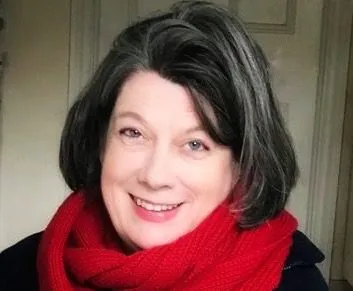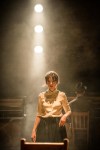It's time to put set designers centre stage
Sarah Crompton reflects on Tom Scutt’s calls for greater recognition for the work of designers

© Marc Brenner
The designer Tom Scutt has been running a cheeky but firm online campaign for the designer – and the rest of the production team – to be credited when pictures of their work are sent out for publicity purposes.
As a journalist I can see the problems – long lists of names are never the most riveting reading. But in principle, he is absolutely right. A design for a play can make as much – or even more – impact as its starring performance or its directorial intent. Summer and Smoke, which Scutt designed at the Almeida, is clearly (from the reviews, because I haven’t seen it yet) a production that owes its overall impact to a great symphonic interaction between the cast, led by Patsy Ferran, the director Rebecca Frecknall, and the entire creative team.
When I look back on productions, I often think of the set quicker than the actors
It is undoubtedly true that design has a huge effect. When I look back on certain productions, I quite often think of the set quicker than the actors. For example, it was Es Devlin’s design that made The Nether a play I will always remember. More recently Bunny Christie’s newspaper office mountain that dominated Ink gave the play its very particular flavour. And I love a hyper-realistic set; the sight of a fully-stocked bookshelf can make my heart leap with joy. One of the most brilliant things about Devlin’s set for Girls and Boys, by Dennis Kelly, starring Carey Mulligan, was the way it so perfectly blended the abstract and the real.
I’ve been thinking a lot about design, as it happens, as I have trudged around the country watching Macbeths and feeling rather unhappy at the results. I know in my own mind that one of the reasons I found the National Theatre’s production so difficult to warm to was that I had an almost visceral reaction to the ugliness of Rae Smith’s design. It may have been integral to the post-apocalyptic mood, but it set my teeth on edge.
You often see a play or a musical before you start to hear it
Then I had an odd thing with Fly Davis. On Saturday I went to see Caroline, or Change at Hampstead Theatre and was blown away by the design: simple yet so imaginative. I thought, I love this woman. On Tuesday, I went to see Macbeth, where her design is absolutely integral to Polly Findlay’s concept of the play and had very mixed feelings. I was impressed by the way that the combination of carpet and hard edges mimicked the play’s unsettling combination of the private and the public. On the other hand, someone’s decision to put a water cooler stage left irritated me by its crass symbolism.
What I really appreciated, though, was that there was in the programme, a little bit by Davis on her approach and her early sketches. It made me think about the design in a much more detailed and informed way.
So yes, Tom Scutt, you are absolutely right. Design is critical and we should all acknowledge it much more – in programme notes and in credits. How a thing looks intimately affects how the audiences feel about it; you often see a play or a musical before you start to hear it. The men and women who create the stage worlds which we experience deserve their full share of the applause. And, come to that, the brickbats.




















